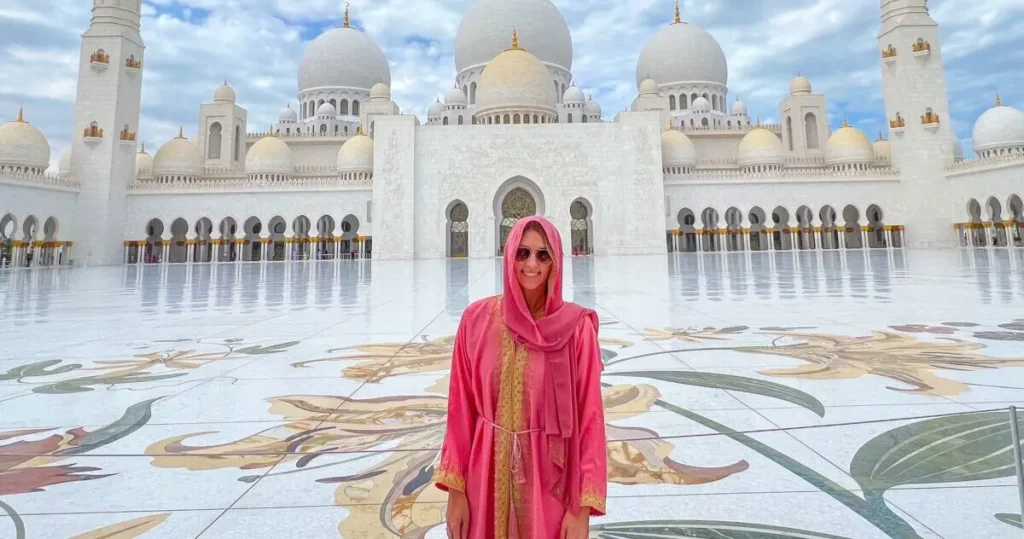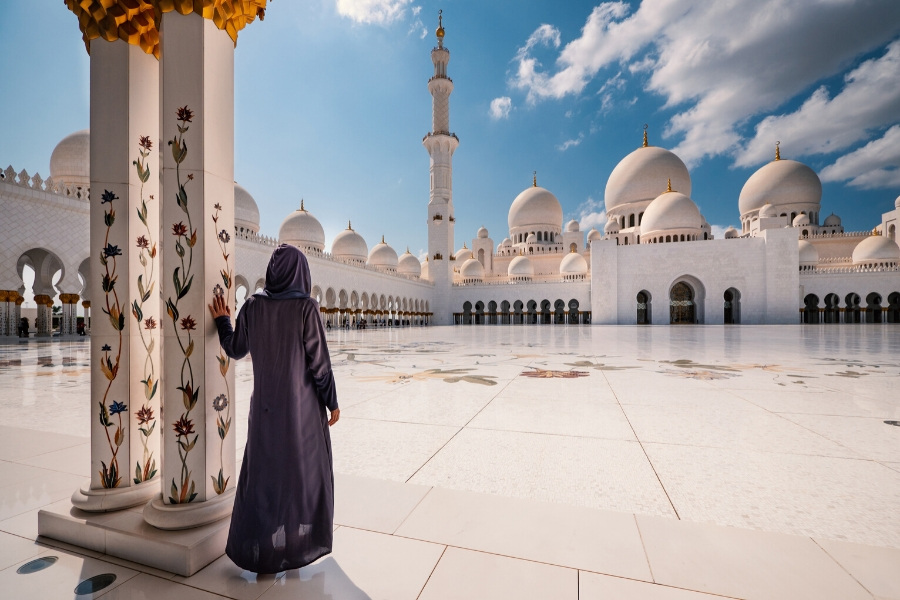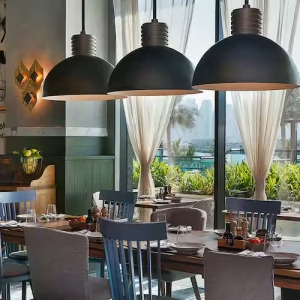Visiting a mosque in Dubai is a beautiful way to explore the city’s culture, history, and spirituality. Whether you’re admiring the architectural marvel of Jumeirah Mosque or stepping inside a smaller, peaceful community mosque, knowing what to wear is just as important as knowing when to visit.
As a tourist, it’s natural to have questions. What to Wear at Mosques in Dubai ? Do you need to cover your head? Can you wear jeans? What about kids? This guide will take you through everything you need to know—so you can walk in with confidence and respect, blending comfort with cultural sensitivity.
Why Dress Code Matters at Mosques
Mosques are sacred spaces where people gather to pray, reflect, and connect with God. They’re places of peace and tradition. Just like you’d dress appropriately to visit a temple, church, or cathedral, mosques deserve the same level of respect.

Dubai, although modern and diverse, holds firm to Islamic customs when it comes to religious places. The dress code isn’t about fashion rules—it’s about cultural appreciation. Dressing modestly shows humility and consideration for local beliefs, which can deeply enhance your travel experience.
General Dress Code for Men and Women
When entering a mosque in Dubai, both men and women should follow modest dressing guidelines. The idea is simple: cover your body in a way that shows respect.
For Women:
- Shoulders and arms must be covered
- Legs should be fully covered—no shorts or short skirts
- Loose-fitting clothing is ideal
- A headscarf is usually required (carry one with you)
- No sheer or see-through fabrics

For Men:
- No shorts—trousers or full-length pants are required
- Avoid sleeveless tops or muscle shirts
- Stick to loose, non-revealing clothes
- T-shirts with offensive slogans or images should be avoided
You don’t need to wear traditional Emirati dress. You can stick to your own style—just make sure it’s conservative.
What to Pack If You Plan to Visit a Mosque
Packing for a mosque visit doesn’t mean you need a whole new wardrobe. A few mindful choices in your suitcase can go a long way.
Women should pack:
- A lightweight scarf (for covering your head)
- Long-sleeved tops or cardigans
- Maxi skirts or loose trousers
- A modest, full-length dress
- A shawl or wrap, in case more coverage is needed
Men should pack:
- Full-length pants
- T-shirts or shirts with sleeves
- A light jacket or overshirt if your top is too fitted
Wearing breathable fabrics like cotton or linen will also keep you comfortable, especially during Dubai’s warmer months.

What Happens If You’re Not Dressed Appropriately?
Don’t worry—most popular mosques that welcome tourists (like Jumeirah Mosque) are well-prepared. If your outfit doesn’t meet the dress code, they often provide an abaya (for women) or kandura (for men) free of charge or for a small fee. These traditional garments are loose and modest, and you can wear them over your clothes.
That said, not all mosques have facilities to loan clothing. Smaller mosques expect you to come dressed respectfully, so it’s best to be prepared.
Footwear Rules: What to Know Before You Step In
In all mosques, shoes must be removed before entering the prayer area. This is a universal rule, and you’ll see racks or shelves at the entrance to store your shoes.
Make sure your socks are clean and tidy, as you’ll be walking barefoot or in socks inside the mosque. Flip-flops or slip-on shoes are convenient for this reason.
What About Children’s Clothing?
If you’re traveling with kids, they should follow the same modest dress code as adults—though a little flexibility is generally accepted.
For girls: A headscarf is appreciated but not always mandatory. Make sure their shoulders and knees are covered.
For boys: They should wear full-length pants and tops with sleeves.
Mosques are generally family-friendly spaces, and respectful behavior is appreciated more than strict fashion rules for kids.
Visiting During Prayer Time: Dress Extra Modestly
If you’re visiting a mosque during prayer hours or Jummah (Friday prayers), expect the place to be more crowded with local worshippers. This is when dressing modestly becomes even more crucial.
Even if you’re just observing from a visitor area, blending in with conservative clothing shows that you’re mindful of the cultural context. You might even find the atmosphere incredibly peaceful and grounding.

Additional Tips for a Comfortable Visit
Aside from clothing, here are a few etiquette tips to keep in mind:
- Keep your voice low: Mosques are places of worship. Maintain a calm and quiet tone.
- No public displays of affection: Hand-holding, hugging, or any romantic gestures are considered inappropriate inside the mosque.
- Ask before taking photos: Many mosques allow photography in designated areas, but it’s best to ask first.
- Stay off prayer mats: These are sacred and meant for worshippers only. Stick to visitor paths if guided.
Non-Muslim Visitors Are Welcome
One of the beautiful aspects of Dubai is its open-door approach to non-Muslim visitors who are curious about Islamic culture. Many mosques even offer guided tours in English, giving you insights into the faith, architecture, and traditions.
These tours are a chance to learn, ask questions, and experience Islamic hospitality firsthand. When you dress appropriately, it shows that you’re there to genuinely engage—and that respect is always returned.
The Symbolism Behind Modest Clothing
Modesty in Islamic culture isn’t just about covering the body—it’s about humility, dignity, and presence. When you put on a scarf or wear loose clothes out of respect, it’s seen as a small but meaningful gesture.
It shows you’re not just a tourist, but someone who cares about understanding local customs. In return, you’ll often receive smiles, greetings, and sometimes, even deep conversations.
Where You Can Visit: Popular Mosques in Dubai
If you’re ready to explore, here are a few mosques in Dubai that welcome tourists:
- Jumeirah Mosque – The most iconic and photogenic mosque in the city, with daily guided tours for non-Muslims.
- Al Farooq Omar Bin Al Khattab Mosque – Known as the Blue Mosque, it blends Andalusian and Ottoman designs.
- Iranian Mosque (Imam Hussein Mosque) – A colorful Persian-style mosque near the beach in Satwa.
Before visiting, check if the mosque allows non-Muslim entry and whether there are guided tours. Arrive on time, dress modestly, and enjoy the calm.
Final Thoughts: Respect Opens Doors
Dubai is a city of contrasts—glamour and spirituality, innovation and tradition. When you choose to step inside a mosque, you’re stepping into centuries of history, faith, and cultural pride.
Dressing respectfully isn’t about restriction—it’s about participation. It’s about entering someone else’s sacred space with humility and grace.
So wrap that scarf, slip on those long pants, and go in with an open heart. You might walk out not only with beautiful photos but also a deeper understanding of what truly connects people around the world.
Do follow UAE Stories on Instagram













